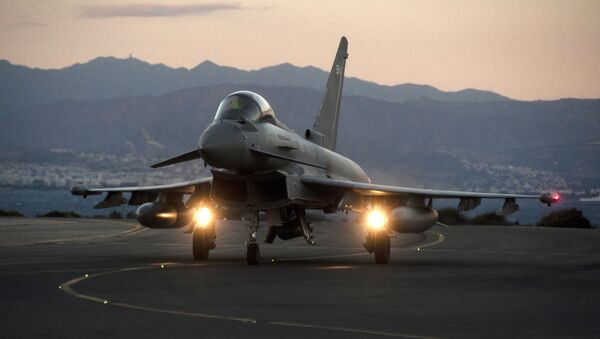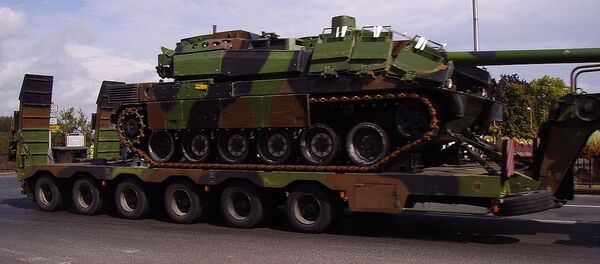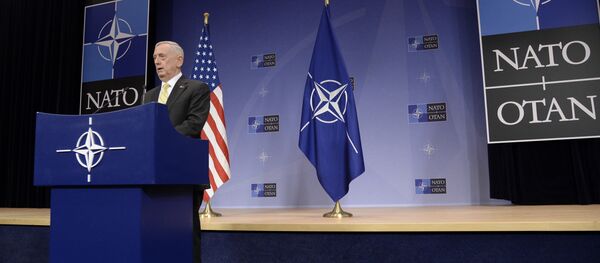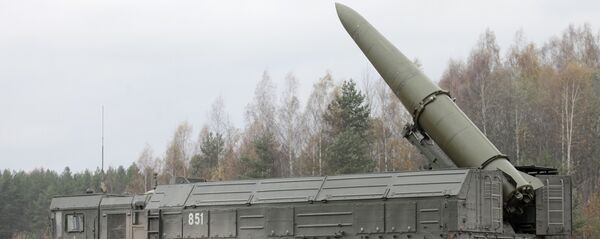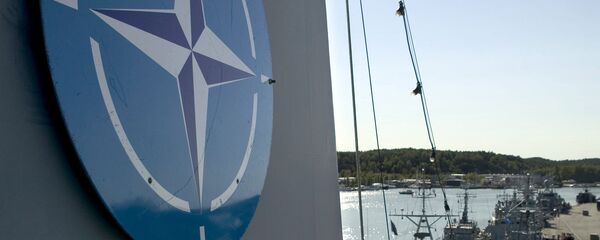During the exercise, pilots will practice flights in pairs and at extremely low altitudes of 100-150 meters. According to military experts, such training will allow for probing the capabilities of Russia’s aerial defense system.
The drills are taking place amid a massive buildup in NATO’s presence near Russia’s western border.
Mutual Reconnaissance
According to former military pilot Maj. Gen. Vladimir Popov, nap-of-the-earth flights are used in modern warfare to breach enemy air defenses.
"High speeds and low altitudes enable bypassing air defense systems because radio radar has less time to catch the plane. It is hidden by hills and woods. As a result, the pilot has a higher chance to survive and accomplish the mission," Popov told Sputnik.
The current drills cannot be regarded as an aggressive move, according to Popov. However, NATO could obtain information about Russian air defenses and test its new aircraft in unusual conditions.
"The Eurofighter Typhoon is a top-class plane. But it just started to fly and its capabilities are yet to be tested. NATO pilots are not familiar with the Baltic region. Of course, they want to get familiar with the area. In addition, they are examining Russian air defense which activates each time a foreign plane flies near the border. They could receive some information," he said.
In recent years, over 130 advanced missile air defense systems have entered service with the Russian military, ranging from the Pantsir-S1 short-range system to the S-400 long-range system. Many of them are deployed to Russia’s Western Military District. It is no surprise that NATO is focused on exploring their capabilities.
Moscow Will Not Explain Itself to NATO
Last Friday, a French E-3F AWACS plane conducted a reconnaissance flight along the border of the Kaliningrad Region. On March 23, an RC-135W of the Royal Air Force took the same route. Recently, early warning and control aircraft of the United States Air Force flew over Estonia.
The spike in NATO’s activities can be explained by the fact that in early-October the Russian Defense Ministry confirmed the deployment of Iskander missile systems to the western exclave of Kaliningrad. Earlier, Russian Foreign Minister Sergei Lavrov told the Italian newspaper Corriere della Sera that the measure was a "response to the destructive moves by NATO."
"There is not going to be a report, there is no talk of this," Andrei Kelin, head of the Russian Foreign Ministry's European Cooperation Department, told Sputnik.
He added that at the upcoming talks the parties are expected to discuss acute issues of bilateral concern.
"We are concerned about the deployments that are now taking place in the west, in the Baltics, primarily. […] That's what this conversation will be about: transparency, exchange of opinions and removal of the existing concerns," Kelin underscored.
NATO Troops Arriving in the Baltics
In July, NATO held a summit in Warsaw, where defense ministers finalized arrangements to deploy multinational NATO battalions to Estonia, Latvia, Lithuania and Poland, totaling around 4,000 troops. The summit also confirmed the deployment of anti-ballistic missile systems and radars in Romania and Poland and confirmed that the US would deploy 1,000 troops in Poland.
The first British units arrived in Estonia in mid-March. The deployment is expected to be completed in the first half of April. Some 800 British and 300 French personnel will be stationed in the region.
Britain sent to Estonia Challenger 2 tanks, Warrior combat infantry vehicles and reconnaissance drones. France will send to Estonia Leclerc tanks, VAB armored vehicles and VBCI infantry combat vehicles. The battalion will be stationed in the Estonian town of Tapa.
Never miss a story again — sign up to our Telegram channel and we'll keep you up to speed!

